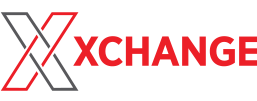XChange of Ideas – Trends with Benefits

This XChange of Ideas shares trends that can boost your business’ productivity.
We recently spent three packed days at the XChange 2022 Conference. While we attend to improve our service offerings and business, many of the insights will benefit your business as well.
1 Industry Consolidation Awareness
As with most maturing, dynamic industries, consolidation of vendors is not unusual in technology. Bringing together complimentary technologies and solutions can create synergy and economies of scale. Currently, we are seeing something a bit different. Companies that provide the systems we use to run our business are acquiring products and services that we offer to our customers. By offering solutions we sell, and the solutions we use, our vendors are hoping to provide us with better integration and efficiencies.
The risk, however, is that service providers will focus, or limit, their options to match the “single vendor” efficiency. While you, as the customer, may benefit from the efficiency, these benefits will be fleeting if the solutions do not meet your needs.
We, at Cumulus Global, will continue to offer multiple solutions for nearly all of the services we offer. We commit to this strategy because efficient mediocrity serves nobody well.
2 VDI is Better than O.K.
Acceptance and use of virtual desktop infrastructure (VDI) and remote desktop services is on the rise. Beyond an interim solution, VDI services prove to offer many businesses long term value. We see several reasons for considering a move to VDI, including:
- Support for hybrid work environments. With employees working in office and remote, a VDI environment provides a single computing environment for your entire business. Accessing files and applications is the same, regardless of location and end user device.
- Strategic Savings. VDI services extend the useful life of your existing laptops and desktops. Since VDI clients are not processing data locally, the demand on processors, memory, and disk space are minimal. Aging equipment can remain in service without impacting performance.
- Improved Security. VDI services run in secure, professionally run data centers. We use Microsoft Azure and Google Cloud Platform for VDI services. VDI provides private, secure networks, with multiple access options to meet your business needs.
- Business Continuity and Resiliency. The faster you can recover from a disaster or technology failure, the better your business will survive and grow. VDI services remove most of the risks from local disasters and system failures. As you can access your services from anywhere you are Internet-connected, and from most any end user device, teams can easily relocate and work around localized disruptions.
As disruption of technology supply chains continues, VDI allows you to upgrade your environment without investing in new desktop and laptop devices. You can move forward with your business without worrying about system availability.
To explore if VDI services can help your business, contact us about our security assessments, or schedule an intro call with one of our Cloud Advisors.


